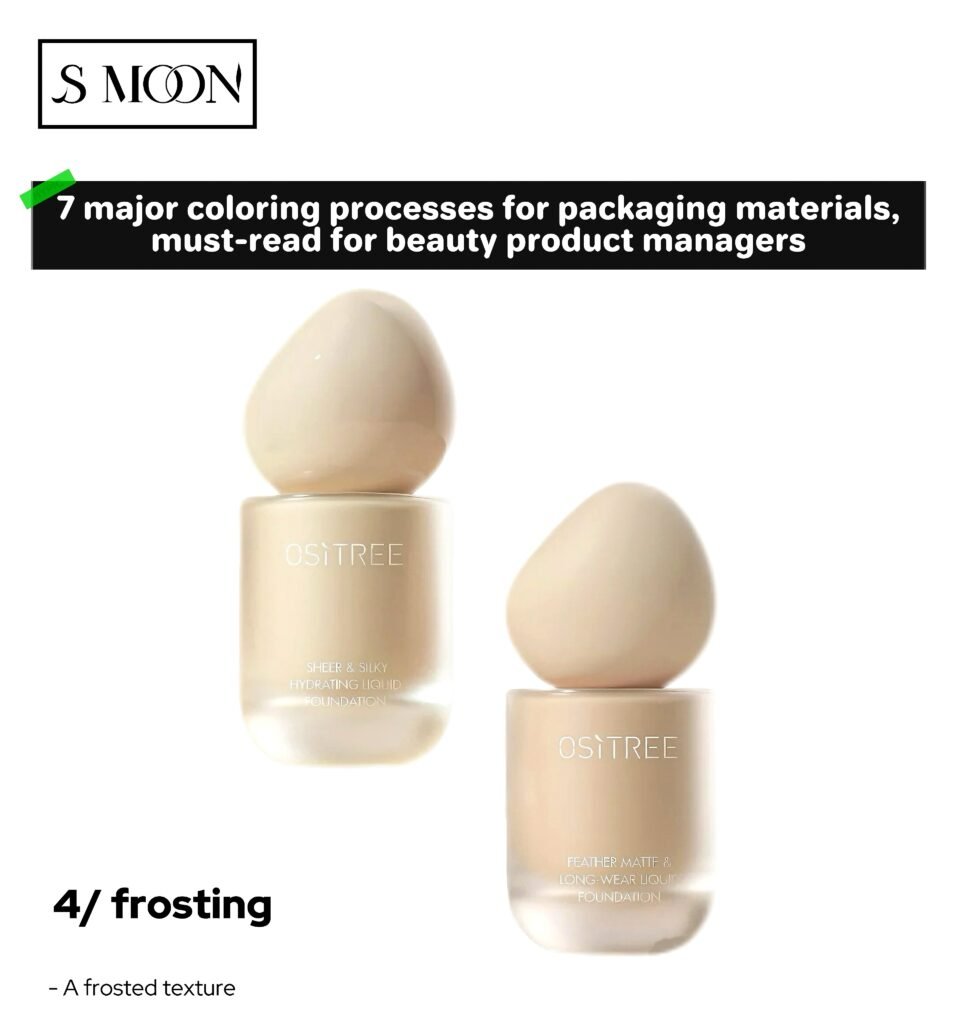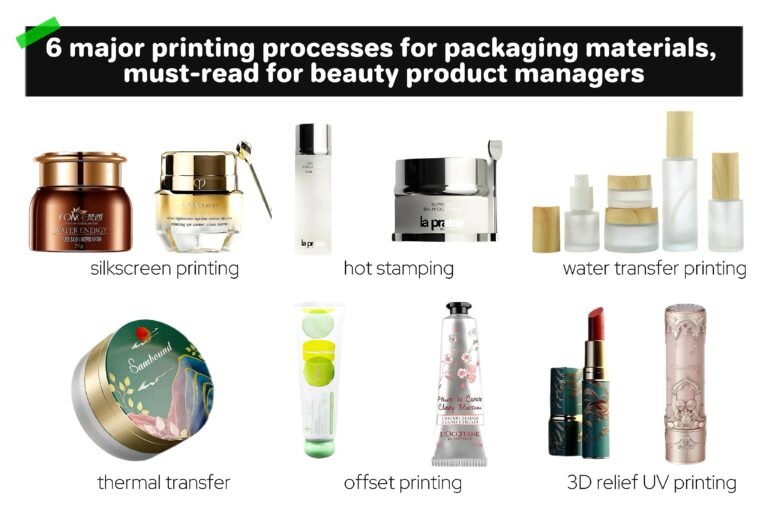In the previous article, we shared 6 common printing processes for cosmetic inner packaging. Today, we will continue to share 7 essential coloring processes.
- Anodized aluminium
- Electroplating (UV)
- Spraying
- Frosting
- Brushed gold and silver
- Secondary oxidation
- Injection color
Anodized aluminium is aluminium that has undergone an electrochemical process called anodization, which enhances its natural oxide layer.

1/ Anodized aluminum
Aluminium exterior with a layer wrapped around an inner layer of plastic.
Electroplating is a process that involves depositing a layer of metal onto a surface through electrochemical reactions. This technique is widely used for various applications, including enhancing the appearance, corrosion resistance, and wear resistance of objects.

2/ Electroplating (UV)
UV color treatment on the surface of plastic/aluminium, the effect is brighter than spraying.
Generally used in bottle caps and pumps, and also in bottle body electroplating.
Relatively high cost.
Spray painting is a technique where a device sprays coating material through the air onto a surface using compressed gas to atomize and direct the paint particles.

3/ Spraying
Use spray line to do surface treatment on most packaging materials such as plasticglass, aluminum, etc.
Compared with electroplating, the color is dull. 1) Inner bottle outer spray: spray on the outside of the inner bottle (liner), and there is a clear gap between the outer bottle and the outer bottle from the outside.
2) Outer bottle inner spray: spray on the inside of the outer bottle, which looks large from the outside. This requires the bottle structure to have an inner liner.
3) Outer bottle outer spray: the process of spraying directly on the outermost surface of the bottle
Frosting refers to a frosted texture used to create a translucent or opaque finish, commonly in design, architecture, and product manufacturing.”

4/ Frosting: a frosted texture
The principle is to rub accelerated abrasive particles against the surface of the bottleto remove rust, burrs, oxide layers or surface pretreatment, etc.
It can change the finish and stress state of the bottle surface
Brushed gold and silver finishes offer a blend of beauty and practicality, making them popular choices in various applications. Their unique texture and modern appeal enhance the overall design of products, making them stand out in both fashion and decor.

5/ Brushed gold and silver
It is actually a film. lf you look closely, you can find the joint gap on the bottle.
Secondary oxidation is the process that occurs after the initial oxidation of a material, often involving the further reaction of oxidized compounds. This can lead to the formation of additional oxide layers or compounds, which may affect the material’s properties.

6/ Secondary oxidation
Secondary oxidation is performed on the original oxide layer, so that the glossy surface is covered with a dull surface pattern or the dull surface has a glossy surface pattern.
Mostly used for logo production.
Injection color is a method of applying color to materials, particularly in printing and manufacturing. It involves introducing color during the injection molding process.

7/ Injection color: adding color powder to the raw materials during product injection molding is arelatively cheap process
Pearl powder and titanium dioxide can also be added to turn transparent PET into opaque colors (additional color powder can be used for color adjustment). The generation of water ripples is related to the amount of pearl powder added.
The 7 major coloring processes for packaging material are widely used in product packaging, if you have a project that requires glass packaging products, please contact us. Thank you!

